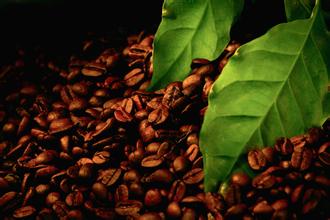Description of flavor of EXCELSO washed coffee beans in Vera plateau, Colombia, origin of grinding scale
Description of flavor of EXCELSO washed coffee beans in Vera plateau, Colombia, origin of grinding scale
Monsalot is located in the southwest of the Colombian province of Ulla, and most of its farmers grow on a small scale, treating coffee as a staple agricultural product in exchange for cash. The New Millennium Farmers' Association (Grupo Asociativo Productores del Nuevo Milenio) was set up a few years ago to improve the quality of coffee and expect to sell raw beans at higher prices. In addition, in 2005, the United States Agency for International Development (USAID) launched the Colombian boutique coffee program in the city, introducing American boutique raw bean traders to cooperate with the Millennium Farmers' Association. They sent people to Monsalot to participate in coffee production, and knew that farmers were improving their planting techniques and producing better coffee. In the boutique coffee market, they also provided suggestions on how to position and market.
At present, the New Millennium Peasants' Association has 42 members and can produce about three containers (about 825 bags) of raw coffee beans a year. In order to improve the quality, the New Millennium Peasants' Association continues to recruit new members in Monsalot, hoping to expand the scale of production. In addition, with the assistance of USAID and American traders, they have set up a local cup testing laboratory to teach farmers the method of cup testing, hoping that farmers can pass through the cup to judge the quality of coffee, which will be helpful to coffee production.
The main varieties of Colombian coffee are small grains of coffee. Plants are small trees or large shrubs, 5-8 m tall, usually much branched at base; old branches gray-white, nodes dilated, young branches glabrous, compressed. Leaves thinly leathery, ovate-lanceolate or lanceolate, 6-14 cm long and 3.5-5 cm wide, apex long acuminate, acuminate part 10-15 mm long, base cuneate or slightly obtuse, rarely rounded, entire or shallowly wavy, both surfaces glabrous, lower vein axils with or without small pores; midrib raised on both surfaces of leaf, 7-13 on each side of lateral veins; petiole 8-15 mm long Stipules broadly triangular, arising from the tip of the upper part of the young branch conical or awn tip, the tip of the old branch is often protruding tip, 3-6 mm long. Cymes several clustered in leaf axils, each with 2-5 flowers, without a total pedicel or with a very short peduncle; flowers fragrant, with pedicels 0.5-1 mm long; bracts basally ±connate, dimorphic, of which 2 are broadly triangular, nearly equal in length and width, the other 2 lanceolate, twice as long as wide, leaf-shaped; calyx tubular.
No matter in terms of yield or texture, Colombian coffee is first produced by Medellin, which is characterized by full granules, rich nutrition, moderate acidity, good balance, rich aroma and soft taste. In addition to Medellin, the capitals of two neighboring provinces in the south, Armenia and Manizales, are also famous coffee producers, which formerly belonged to Medellin's province of Andiquio, which had a Caldas football team that played in the last Toyota Cup. These three places have formed the world-famous "coffee zone".

Important Notice :
前街咖啡 FrontStreet Coffee has moved to new addredd:
FrontStreet Coffee Address: 315,Donghua East Road,GuangZhou
Tel:020 38364473
- Prev

Grinding scale treatment method for producing area of flavor and taste varieties of Rwandan coffee beans
Rwanda coffee bean flavor variety production area grinding scale treatment Rwanda has about 33000 hectares of coffee plantations and 500000 people are engaged in the coffee industry. With the good natural conditions of high altitude and fertile volcanic soil, the country's fertile soil and suitable climate contribute to plant growth, and coffee trees seem to be driven or forced to grow upward, or because they grow too much.
- Next

Introduction to the Brand Flavor description of the Origin Story of Coffee beans in Huakui Manor, Ethiopia
Ethiopian Coffee Origin Brand Flavor description Taste Manor Origin introduction in traditional Ethiopian families, there are two or three times a day to drink coffee, it has a variety of drinking etiquette or ceremony. In the evening, the whole family sat on the ground around a small charcoal stove. There is a special layer on the floor around the charcoal stove
Related
- Detailed explanation of Jadeite planting Land in Panamanian Jadeite Manor introduction to the grading system of Jadeite competitive bidding, Red bid, Green bid and Rose Summer
- Story of Coffee planting in Brenka region of Costa Rica Stonehenge Manor anaerobic heavy honey treatment of flavor mouth
- What's on the barrel of Blue Mountain Coffee beans?
- Can American coffee also pull flowers? How to use hot American style to pull out a good-looking pattern?
- Can you make a cold extract with coffee beans? What is the right proportion for cold-extracted coffee formula?
- Indonesian PWN Gold Mandrine Coffee Origin Features Flavor How to Chong? Mandolin coffee is American.
- A brief introduction to the flavor characteristics of Brazilian yellow bourbon coffee beans
- What is the effect of different water quality on the flavor of cold-extracted coffee? What kind of water is best for brewing coffee?
- Why do you think of Rose Summer whenever you mention Panamanian coffee?
- Introduction to the characteristics of authentic blue mountain coffee bean producing areas? What is the CIB Coffee Authority in Jamaica?

